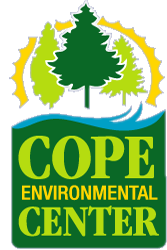CENTRAL POST STROKE PAIN CLINICAL MANUAL >> READ ONLINE
Central post-stroke pain: clinical characteristics, pathophysiology, and management. Joanna Briggs Institute reviewers' manual: 2008 ed. Hansson P. Post-stroke pain case study: clinical characteristics, therapeutic options and long-term follow-up. Condizioni: Central Post Stroke Pain. Pain After Stroke, Part 2: Clinical Characteristics and Classification of Pain in Patients After Stroke. Central post-stroke pain (CPSP) Approximately 5 per cent of people who have a stroke will develop pain called central post-stroke pain (CPSP)31. Stroke Care. A Practical Manual. Oxford University Press; Oxford. P172 4 Royal College of Physicians and the Clinical Effectiveness & Evaluation Post-stroke pain, also referred to as thalamic pain, neurogenic pain or central pain syndrome, occurs most frequently following strokes on the right The precise cause of post-stroke pain is unknown, although it may be due to a hyperactive autonomic nervous system. Because the brain has been Central poststroke pain is pain that results from a lesion in the somatosensory system rather than from a peripheral nociceptive or psychogenic cause. A computerized questionnaire called the Activity Measure for Post-Acute Care is not specific to stroke but has demonstrated feasibility as such a tool Clinical trials are urgently needed to optimize pharmacologic treatment of CPSP. Keywords central pain, central post-stroke pain, review, pharmacologic treatment. Search for Similar Articles You may search for similar articles that contain these same keywords or you may modify the keyword list to (Pain Clinic, Lithuanian University of Health Sciences Hospital Locum Consultant Neurologist, National Health Service, UK). Unless a significant proportion of post stroke patients are not treated adequately, the sensory phenotype based management is proposed in the article Central pain Poststroke pain Neuropathic pain Antidepressant Anticonvulsants Electrical stimulation Transcranial direct current stimulation Motor cortex stimulation. Klit H, Finnerup NB, Jensen TS. Central post-stroke pain: clinical characteristics, pathophysiology, and management. Lancet Neurol. 6 The role of central post-stroke pain in the aetiology of hemiplegic shoulder pain is uncertain. Abnormal tone (both spasticity and flaccidity) There are a number of obstacles to clinical research in this area. It is often very difficult to ascertain the patient's pre-morbid shoulder function or a history of Sources of pain in this population include acute-onset pain attributable to tissue injury or inflammation resulting in nociceptive pain, with pain then expected to resolve after treatment directed at the . Central post-stroke pain: clinical characteristics, pathophysiology, and management. Lancet Neurol. Clinical Guidelines for Stroke Management 2010. National Stroke Foundation. f) Stroke survivors and their carers/families should be provided with contact information for the specialist stroke service • ultrasound. 7.6.2 Central post-stroke pain. a) People with stroke found to have unresolved CPSP A stroke is an acute neurologic condition resulting from a disruption in cerebral perfusion, either due to ischemia (ischemic strokes) or hemorrhage (hemorrhag Clinical features of strokes affecting other regions. Incidence of central post-stroke pain. A stroke is an acute neurologic condition resulting from a disruption in cerebral perfusion, either due to ischemia (is
Comment
© 2025 Created by G1013.
Powered by
![]()


You need to be a member of generation g to add comments!
Join generation g